All-on-4 Albania:
2025 Prices | Save 85% vs EU/USA
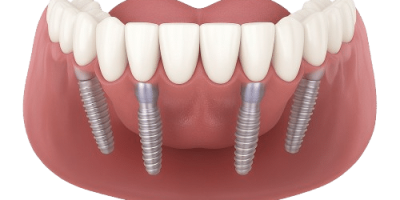
3200€
/ Per Arch
🛈 Includes: Tooth Preperation + Digital Scans + Temporary Veneers
- Timescale: 1-4 Days
- Warranty: 15+ Years
- FREE All-Inclusive Dental Tourism - (Quotes Over 4,000€): Flight Tickets + VIP Transfers + Hotel + Personal Assistant


All-on-4 Albania:
2025 Prices | Save 85% vs EU/USA

3200€
/ Per Arch
🛈 Includes: Tooth Preperation + Digital Scans + Temporary Crowns
- Timescale:1-4 Days
- Warranty: 15+ Years
- FREE All-Inclusive Dental Tourism - 🛈(Quotes Over 4,000€): Flight Tickets + VIP Transfers + Hotel + Personal Assistant


How Much Do All-on-4 Cost in Albania? (2025 Prices)
All-on-4 dental implants in Albania cost €3,200-€7,300 per arch, with an average price of €4,200. A full mouth restoration (both arches) starts at €6,600. These prices include implants, abutments, and fixed dentures. Albania offers 70-80% savings compared to UK/US prices, where the same procedure costs €14,900+. Prices vary based on clinic, implant brand, and prosthesis material quality.
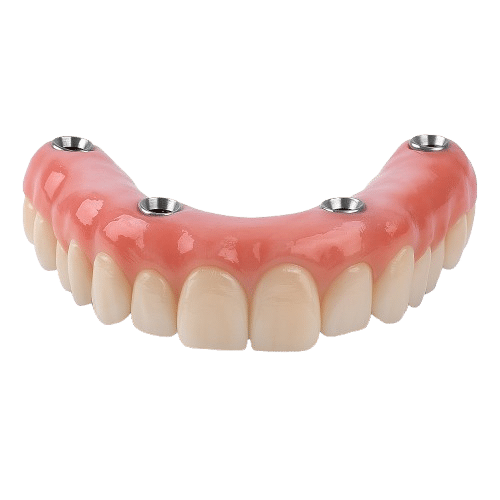
All-on-4 in Albania | Full Guide
Switch between the tabs below to check each attribute and value of All-on-4.
What is All-on-4 dental implants?
All-on-4 dental implants are a full-mouth restoration solution that uses four titanium implants to support a complete arch of prosthetic teeth. This procedure provides a cost-effective, faster, and minimally invasive alternative to traditional implants, offering patients a permanent and natural-looking smile with minimal recovery time.
What are the different types of All-on-4 available?
All-on-4 dental implants come in several variations to accommodate different patient needs and preferences. The main types include Standard All-on-4 implants, Hybrid All-on-4 implants, Immediate Load All-on-4 implants, Zirconia All-on-4 implants, and All-on-X variations such as All-on-6.
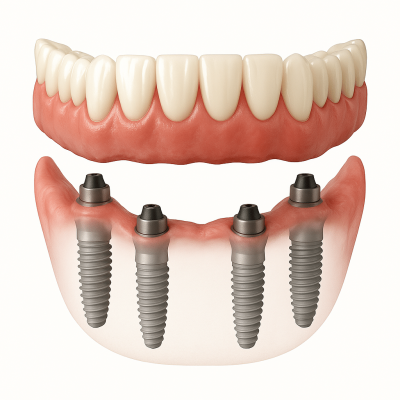
Based on Placement Method and Anatomical Considerations
Standard All-on-4
This type is used for patients with sufficient bone in the upper jaw. It involves placing four standard implants – two vertical implants in the front and two angled implants (30-45°) in the posterior region. This configuration is ideal for patients with normalized bone conditions and adequate bone volume in the maxilla.
Hybrid All-on-4
For patients experiencing bone loss in the posterior maxilla, the Hybrid All-on-4 approach combines two standard implants in the frontal part with two zygomatic implants in the posterior region1. This method addresses moderate bone resorption without requiring bone grafts.
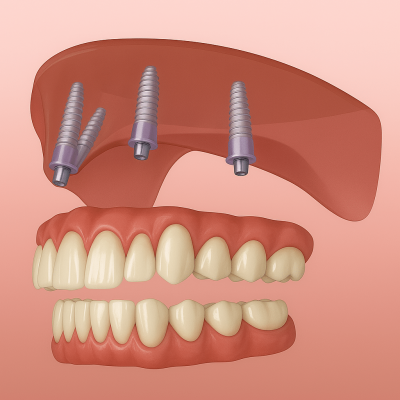
All-on-4 Zygomatic
When the maxillary bone is completely lost, four zygomatic implants can be placed1. This approach allows for rehabilitation of complex cases with severe bone atrophy without resorting to bone grafting procedures.
Based on Materials Used
Acrylic-Based All-on-4
These use dentures typically made from acrylic material that sit on the four dental implants3. The acrylic prosthesis offers good aesthetics and functionality while being more cost-effective.
Zirconia All-on-4
These implants utilize zirconia for the prosthetic teeth, offering superior aesthetics and durability. Zirconia provides excellent biocompatibility and a natural tooth-like appearance.
Based on Loading Protocol
Immediate Load All-on-4
This protocol allows for the placement of a temporary prosthesis on the same day as implant surgery4. Patients can enjoy functional teeth immediately after the procedure, which typically takes about 3-4 hours to complete.
Traditional Load All-on-4
This approach involves a healing period after implant placement before attaching the final prosthesis, allowing for complete osseointegration before loading.
What Are the Materials of All-on-4?
All-on-4 dental implants utilize various materials for both the implant fixtures and the prosthetic bridges. The implants themselves are typically made of titanium, while the prosthetic bridges can be crafted from acrylic, hybrid titanium-acrylic, zirconia, PEEK ceramage, nano ceramic, crystal ultra, or Prettau materials. Each material offers distinct advantages in terms of durability, aesthetics, comfort, and price.
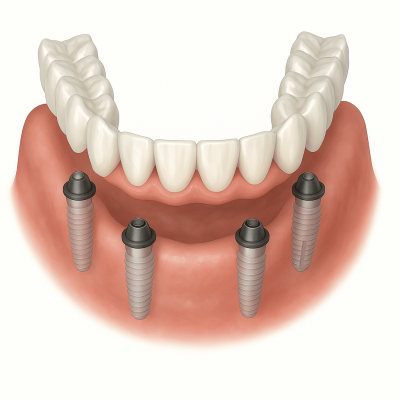
Implant Post Materials
Titanium
Titanium is the most commonly used material for implant posts due to its biocompatibility, strength, and ability to fuse seamlessly with the jawbone (osseointegration). It is lightweight, corrosion-resistant, and has a long history of success in dental implantology. Titanium implants provide exceptional stability and are ideal for most patients.
Zirconia
Zirconia is a ceramic alternative to titanium, offering a metal-free solution for patients with allergies or sensitivities. Known for its aesthetic appeal and compatibility with living tissue, zirconia implants integrate well with bone and resist bacterial growth. It is highly durable but may be more expensive than titanium.
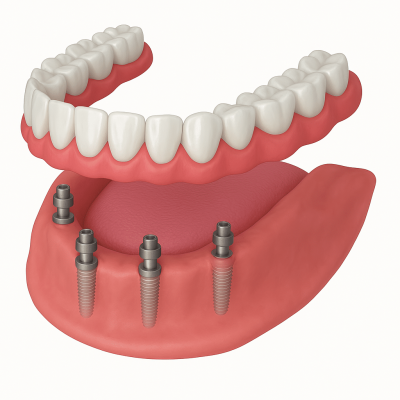
Prosthetic Bridge Materials
Acrylic
Acrylic bridges are often used as temporary prostheses immediately after implant placement. They are lightweight and cost-effective but less durable than other options. Acrylic bridges may require frequent maintenance due to staining and bacterial buildup.
Hybrid Titanium-Acrylic
This option combines a titanium bar with acrylic teeth baked on top. It offers better durability than pure acrylic but retains some of its drawbacks, such as staining and wear over time. The lifespan is typically 5-7 years before replacement is needed.
Zirconia
Zirconia bridges are considered the gold standard for permanent restorations due to their strength, aesthetic appeal, and resistance to staining or bacterial buildup. They mimic natural teeth in appearance and can last over 10-15 years with proper care. However, zirconia is the most expensive option.
PEEK Ceramage
PEEK (Polyether Ether Ketone) is a polymer used alongside zirconia crowns for lightweight and durable restorations. It offers excellent biocompatibility, prevents metallic taste, and provides a natural appearance. PEEK bridges are digitally designed for precision fit but come at a higher cost.
Crystal Ultra
Crystal Ultra is a hybrid nanoceramic material that blends glass with advanced polymers. It is shock-absorbent, lightweight (60% lighter than zirconia), and replicates the feel of natural teeth. While it offers superior comfort and aesthetics, its lifespan ranges from 5-10 years.
Nano Ceramic
Nano Ceramic bridges provide enhanced durability and aesthetics compared to acrylic options. They are lightweight and offer a natural tooth-like appearance but may fall short in longevity compared to zirconia or Crystal Ultra.
What is the complete process of getting All-on-4?
The All-on-4 dental implant procedure involves several key steps, starting from consultation and preparation to surgery and post-operative care. This innovative treatment offers a permanent solution for replacing missing teeth, typically completed within one day for immediate functionality. Below is a step-by-step guide to the complete process:
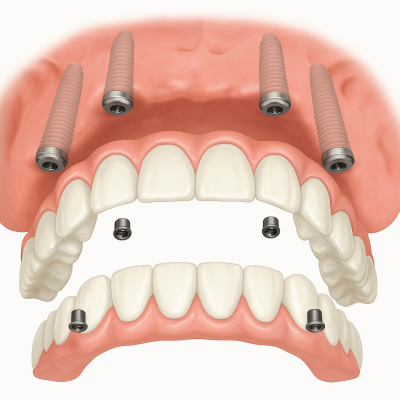
Step 1: Initial Consultation and Evaluation
The process begins with a thorough consultation with your dentist or prosthodontist. During this phase:
Oral Examination: The dentist evaluates your gums, jawbone, and overall oral health to determine if you are a suitable candidate for All-on-4 implants.
Imaging Tests: X-rays, CBCT scans, or 3D imaging are conducted to assess bone density and plan optimal implant placement.
Treatment Plan: A personalized plan is created based on your specific needs, including whether tooth extractions or bone grafting are necessary.
Step 2: Preparation for Surgery
Before the surgery, the mouth is prepared for implant placement:
Tooth Extractions (if needed): Any remaining compromised teeth in the arch are gently extracted.
Bone Smoothing (if needed): The ridge may be reshaped to allow optimal implant stability.
Medical Preparation: You may be advised on medications, sedation options, and pre-operative instructions.
Step 3: Implant Surgery
After surgery, the body undergoes a healing phase known as osseointegration:
Bone Integration: Over 3–6 months, the implants bond with the jawbone to create a stable foundation.
Temporary Bridge Function: You will wear the temporary bridge during this period, which allows normal speaking and eating with certain dietary guidelines.
Follow-ups: Your dentist will monitor healing and adjust the temporary bridge if needed.
Step 4: Healing Period
After surgery, the body undergoes a healing phase known as osseointegration:
Bone Integration: Over 3–6 months, the implants bond with the jawbone to create a stable foundation.
Temporary Bridge Function: You will wear the temporary bridge during this period, which allows normal speaking and eating with certain dietary guidelines.
Follow-ups: Your dentist will monitor healing and adjust the temporary bridge if needed.
Step 5: Final Prosthesis Placement
Once healing is complete:
Final Prosthesis Design: Impressions are taken to design the permanent full-arch bridge, typically made from materials like monolithic zirconia or a titanium-reinforced hybrid.
Attachment: The final prosthesis is fixed to the implants with precision, offering natural aesthetics, durability, and full chewing function.
What are the benefits and risks of All-on-4?
All-on-4 dental implants provide significant benefits, including immediate functionality, reduced bone grafting needs, and cost-effectiveness compared to traditional implants. The main risks include potential implant failure (3-5%), infection, nerve damage, and prosthesis fractures. Benefits typically outweigh risks for suitable candidates when performed by experienced specialists.
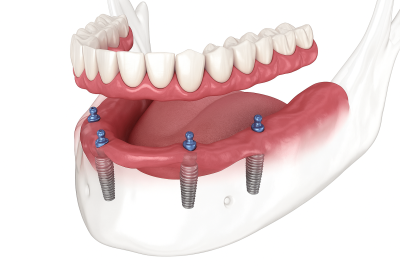
Key Benefits of All-on-4
Immediate Results
Patients receive functional teeth on the same day as surgery, eliminating the months-long waiting period associated with traditional implants. The temporary prosthesis allows for immediate improvement in chewing, speaking, and appearance.
Reduced Need for Bone Grafting
The strategic angled placement of posterior implants maximizes use of available bone, often eliminating the need for extensive bone grafting procedures even in patients with bone loss. This reduces overall treatment time by 3-6 months.
Cost-Effectiveness
All-on-4 requires fewer implants (4 versus 6-8) and fewer surgical procedures than traditional methods, reducing the overall cost by approximately 30%. The treatment also eliminates ongoing expenses associated with removable dentures.
Improved Quality of Life
The fixed prosthesis provides 90-95% of natural chewing function, eliminates speech problems associated with removable dentures, and prevents the facial collapse that occurs with bone resorption. Patients report significant improvement in confidence and social interactions.
Long-Term Solution
All-on-4 implants have a documented success rate of 94-98% over 10 years when properly maintained. The titanium implants can last a lifetime, while the prosthesis typically requires replacement every 10-15 years.
Potential Risks and Considerations
Implant Failure
The failure rate for All-on-4 implants ranges from 3-5%, primarily occurring during the first year. Risk factors include smoking, uncontrolled diabetes, poor oral hygiene, and insufficient bone density.
Infection
Peri-implantitis affects approximately 10% of All-on-4 patients within 5 years. This inflammatory condition can lead to bone loss around implants if not treated promptly with antibiotics and professional cleaning.
Nerve Damage
Temporary or permanent nerve damage occurs in about 1% of cases, resulting in numbness or tingling in the lip, chin, or tongue. This typically happens when implants are placed too close to the mandibular nerve.
Prosthesis Complications
The prosthesis may fracture (5-10% risk over 5 years) or require adjustments due to wear or changes in bite. Patients with bruxism (teeth grinding) have a higher risk of mechanical complications.
Sinus Issues
Upper jaw implants placed near the maxillary sinuses can potentially penetrate the sinus cavity, leading to sinusitis in approximately 2% of cases. Proper pre-surgical planning with 3D imaging significantly reduces this risk.
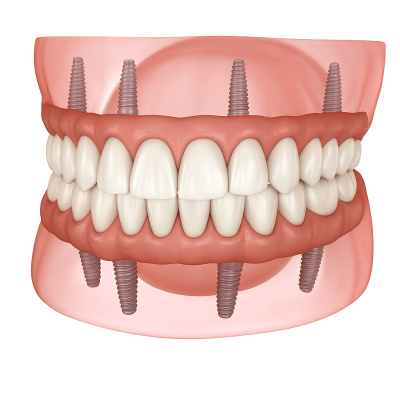
Who is a good candidate for All-on-4?
A good candidate for All-on for-4 dental implants is someone missing most or all teeth in one or both arches, with sufficient jawbone density in key areas, good oral health, and overall physical well-being. Although All-on-4 uses angled placement to reduce bone needs, adequate jawbone structure is still required for successful implant support and long-term stability.
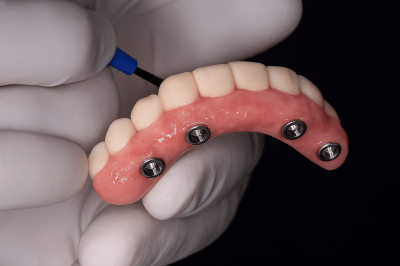
Ideal Candidates Based on Tooth Loss
The primary candidates for All-on-4 implants include:
Individuals who have lost multiple teeth in either the upper or lower arch
Patients who have lost an entire arch of teeth due to injury, decay, or disease
Those with advanced gum disease that has led to extensive tooth loss
People who are at risk of losing most or all of their teeth due to severe decay or periodontal disease
Current denture wearers who struggle with ill-fitting prosthetics and desire a permanent, fixed solution
All-on-4 is specifically designed for patients with widespread tooth loss, as the procedure replaces an entire arch of teeth using just four implants. Patients who still have most of their natural teeth are not ideal candidates, as the procedure is intended for full-arch replacement.
Bone Density Requirements
One of the significant advantages of All-on-4 is that it often requires less bone density than traditional implant methods:
The technique uses angled placement of posterior implants (30-45 degrees) to maximize contact with available bone
This strategic positioning often eliminates the need for extensive bone grafting procedures
Patients with moderate bone loss may still qualify without requiring preliminary bone grafts
The implants are placed in areas where bone is naturally more dense, such as the anterior portion of the jaw
However, patients with severe bone atrophy may require preliminary procedures like bone grafting to ensure sufficient support for the implants.
Health Considerations
Good candidates for All-on-4 should have:
Generally good overall health that won’t impede healing after surgery
Healthy gum tissue free from active periodontal disease
No untreated tooth decay
Good oral hygiene habits
No oral cancer or malignancy
Certain health conditions may affect candidacy or require special management before proceeding with All-on-4 treatment:
Controlled diabetes (uncontrolled diabetes can impair healing)
Managed heart conditions (severe or unmanaged heart disease increases surgical risks)
Treated gum disease (active infection must be resolved before implant placement)
Non-smoking status (smoking significantly increases the risk of implant failure)
Age Factors
There is no upper age limit for All-on-4 implants. Older patients who have lost teeth due to age-related factors often make excellent candidates. The most important consideration is overall health rather than chronological age. However, younger patients with still-developing jaws (typically under 18) are generally not candidates for permanent implant solutions.
Lifestyle Considerations
Ideal candidates should be:
Committed to maintaining good oral hygiene
Willing to attend regular dental check-ups
Non-smokers or willing to quit smoking (smoking increases the risk of implant failure)
Able to follow post-operative care instructions
Realistic about treatment outcomes and healing timelines
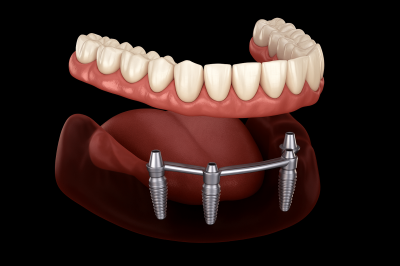
How Long Do All-on-4 Last?
All-on-4 dental implants demonstrate impressive longevity, with the titanium implant posts designed to last a lifetime and the prosthetic components typically lasting 10-25 years depending on materials and maintenance. Clinical studies show a success rate of 95-98% over 10+ years, with one study reporting 98.8% of implants still functioning after 10-18 years.
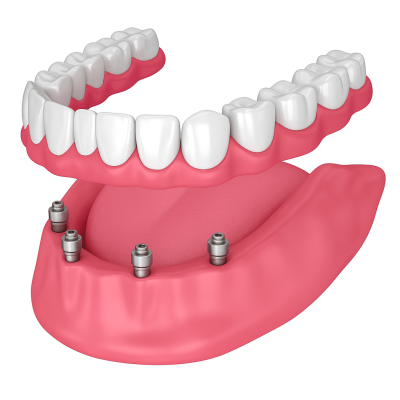
Factors Affecting All-on-4 Longevity
Oral Hygiene and Maintenance
Regular brushing, flossing, and professional cleanings can add 3-5 years to implant lifespan. Neglecting oral hygiene can decrease lifespan by 5-10 years due to increased risk of peri-implantitis
Surgeon's Expertise
The precision of implant placement and the surgeon’s experience significantly impact long-term success. Choosing a qualified dentist with specialized training in All-on-4 technique is crucial for optimal outcomes
Bone Health and Density
The condition of the jawbone provides the foundation for implant stability. Poor bone health due to age, diabetes, or smoking can decrease implant lifespan by 3-7 years
Lifestyle Choices
Smoking can reduce blood circulation to the gums and significantly increase failure risk, potentially shortening implant life by 5-10 years. Avoiding hard foods and not using teeth as tools can add 2-3 years to implant longevity
Clinical Evidence of Longevity
Research supports the long-term durability of All-on-4 implants:
A three-year clinical trial with 32 patients showed a 100% prosthesis survival rate after ten years1.
Studies indicate All-on-4 implants can last 20+ years with proper care4610.
The success rate remains above 95% even ten years after placement2.
A 2019 study of 471 All-on-4 patients found that 98.8% of implants were still functioning after 10–18 years15.
According to dental health examination statistics, All-on-4 implants have an average lifespan of 20-25 years, and with excellent oral hygiene, they can last a lifetime
What Are the Popular Brands of All-on-4?
The most popular All-on-4 dental implant brands include Nobel Biocare (the original developer with TiUnite technology), Straumann (featuring SLActive surface), Zimmer Biomet, BioHorizons (with Laser-Lok microchannels), and Dentsply Sirona. Other leading manufacturers include Osstem, Hiossen, Megagen, Bego, and Bicon, each offering unique technologies for full-arch restorations.
| Brand | Country of Origin | Year Established | Proprietary Technology | Key Features |
|---|---|---|---|---|
| Nobel Biocare | Switzerland | 1981 | TiUnite Surface Technology | Original developer of All-on-4 concept; enhanced osseointegration; reduced healing time |
| Straumann | Switzerland | 1954 | SLActive Hydrophilic Surface | Pro Arch system; Grade 4 titanium or titanium-zirconium alloy; rapid protein absorption |
| Zimmer Biomet | USA | 1927 | Trabecular Metal Implant, 3i T3 Implant | Formed from merger of Zimmer Dental and BIOMET 3i; optimized osseointegration |
| BioHorizons | USA | 1994 | Laser-Lok Microchannels | TeethXpress system; promotes bone growth and soft tissue attachment |
| Dentsply Sirona | USA | 1899 | Integrated Digital Workflow | Comprehensive solutions for planning, guided surgery, and prosthetic rehabilitation |
| Osstem Implant | South Korea | 1997 | SA (Sand-blasted and Acid-etched) Surface | One of four largest implant manufacturers globally; cost-effective solutions |
| Hiossen | USA (HQ) | 2006 | Advanced Surface Treatment | Titanium alloy implants; accelerated osseointegration; optimized healing |
| Megagen | South Korea | 2002 | AnyRidge System, Bioactive Coating | Enhanced implant-abutment connection; improved stability and durability |
| Bego | Germany | 1890 | TiPure Surface Technology | Enhanced osseointegration; diverse range for various clinical needs |
| Bicon | USA | 1985 | Plateau Design, Locking Taper | Mini-Implant system; tapered design; wide-neck structure for stability |
How Do You Maintain and Care for All-on-4?
To maintain All-on-4 dental implants, brush twice daily with a soft-bristle toothbrush, use a water flosser to clean under the prosthesis, and rinse with an antibacterial mouthwash. Attend regular dental check-ups and professional cleanings every 6 months. Avoid hard foods and tobacco to prolong implant lifespan and prevent complications.
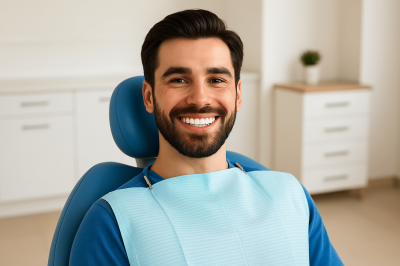
What is the price of All-on-4 in Tirana, Albania? (2025)
-
4 High-Quality Ceramic Teeth (per arch)
-
Titanium Multi-Unit Abutments
-
4 JD® Implants (per arch)
-
15+ Year Warranty
-
Custom-Made Titanium Bar
-
15+ Year Warranty
-
Implant Passport
All-on-4 (Zirconia)
-
12 Solid Monolithic Zirconia Teeth (per arch)
-
Titanium Multi-Unit Abutments
-
4 JD® Implants (per arch)
-
CNC-Milled Titanium Bar
-
15+ Year Warranty
-
Surgery Fee Included
-
Implant Passport
Full mouth (Ceramic)
Full mouth (Ceramic)-
24 High-Quality Ceramic Teeth (12 per arch)
-
8 JD® Dental Implants (4 per arch)
-
Titanium Multi-Unit Abutments
-
Metal-Ceramic Fixed Bridges
-
15+ Year Warranty
-
Surgery Fee Included
-
Implant Passport
Full mouth (Zirconia)
-
24 Solid Monolithic Zirconia Teeth (per arch)
-
Titanium Multi-Unit Abutments
-
8 JD® Implants (per arch)
-
CNC-Milled Titanium Bar
-
15+ Year Warranty
-
Surgery Fee Included
-
Implant Passport
All-on-4 in Albania Price Comparison | Save up to 85% vs Europe/USA
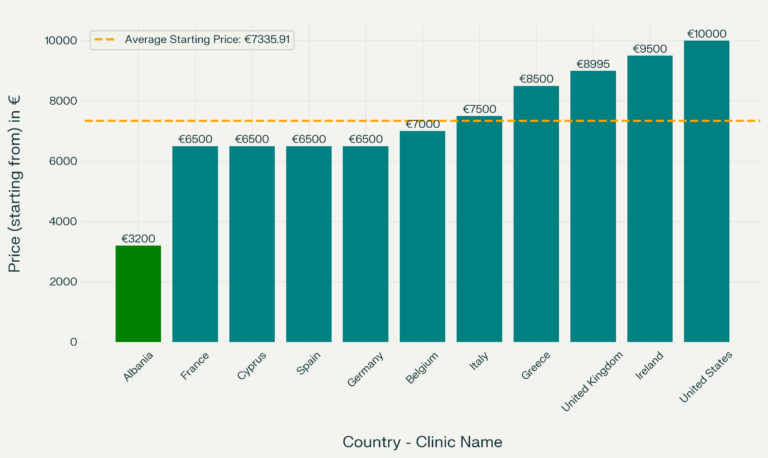
🛈 Select your country from the tabs below for the All-on-4 price comparison to Albania and Savings Calculator.
How much cheaper are All-on-4 in Albania vs Italy?
All-on-4 in Albania costs 57.3% less than in Italy. Prices range from €3,200-€3,400 in Albania, compared to €7,500-€11,500 in Italy. Albanian clinics offer European-standard dental treatment at significantly lower costs. This makes Albania an attractive destination for patients seeking quality, affordable dental implant solutions, particularly for All-on-4 procedures.
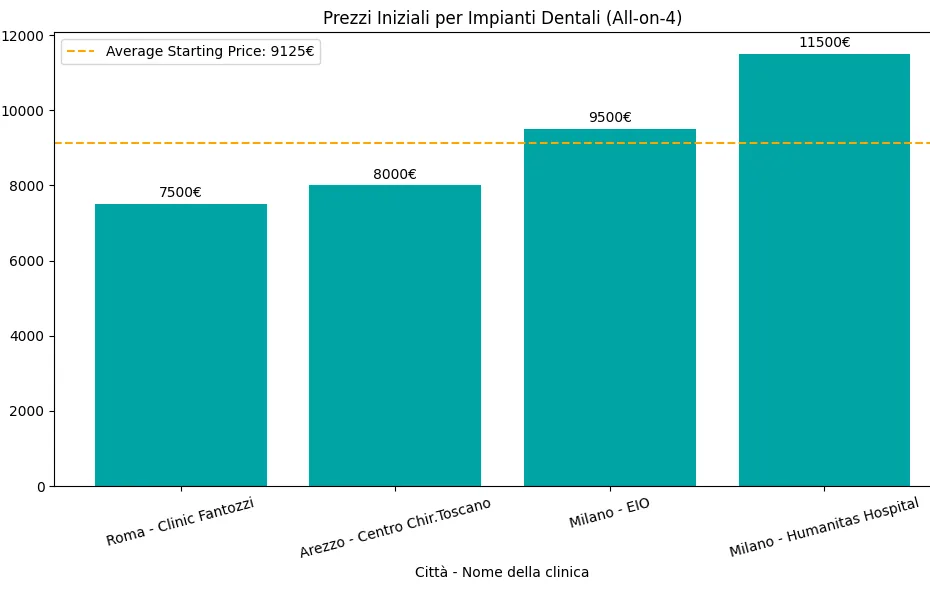
All-on-4 Dental Implants Savings Calculator | Italy vs Albania
| Service | Albania 🇦🇱 | Italy 🇮🇹 | Savings in € | Savings in % |
|---|---|---|---|---|
| - | €- | €- | - | - |
How much cheaper are All-on-4 in Albania vs France?
All-on-4 in Albania costs 50.8% less than in France. Prices range from €3,200-€3,400 in Albania, versus €6,500-€14,500 in France. Albanian clinics offer high-quality, European-standard All-on-4 treatments using certified materials and advanced technology. With quick procedures and potential lifetime durability, Albania has become a popular destination for affordable, premium dental implant solutions.
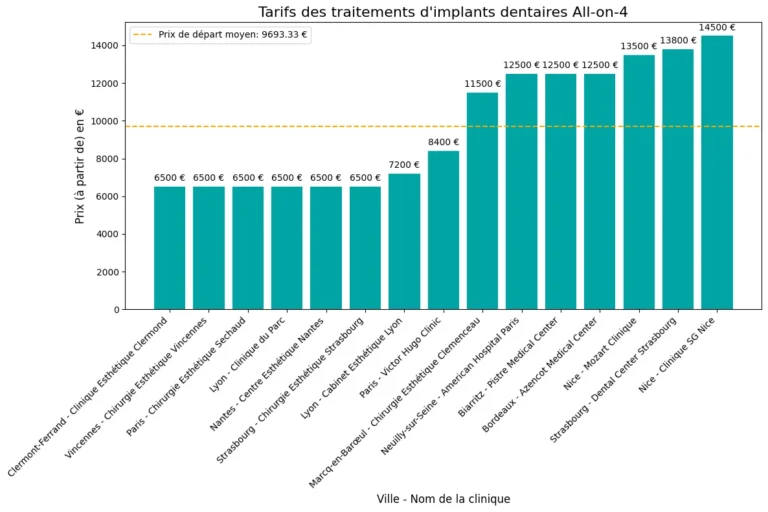
All-on-4 Dental Implants Savings Calculator | France vs Albania
| Service | Albania 🇦🇱 | France 🇫🇷 | Savings in € | Savings in % |
|---|---|---|---|---|
| - | €- | €- | - | - |
How much cheaper are All-on-4 in Albania vs Germany?
All-on-4 in Albania costs 50.8% less than in Germany, with prices ranging from €3,200-€3,400 compared to Germany’s €6,500-€15,400.
The average cost for All-on-4 in Albania is approximately €3,300, while in Germany patients pay around €14,150 – making Albanian All-on-4 treatments €3,300 cheaper. This substantial price difference makes Albania an increasingly popular dental tourism destination for Germans seeking high-quality implant solutions at significantly more affordable rates.
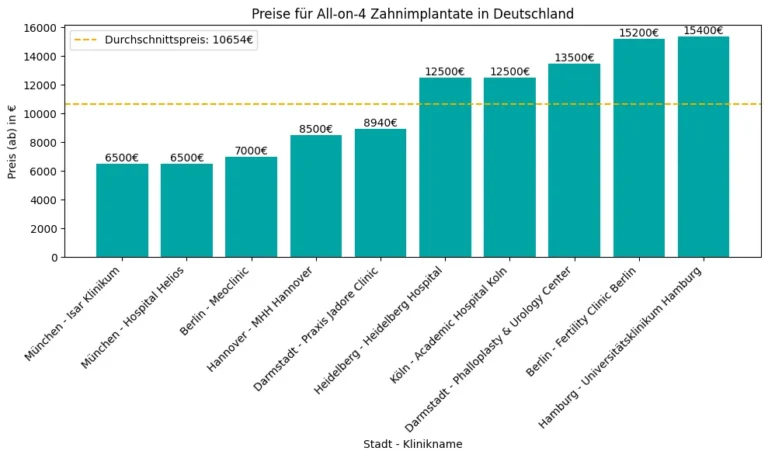
All-on-4 Dental Implants Savings Calculator | Germany vs Albania
| Service | Albania 🇦🇱 | Germany 🇩🇪 | Savings in € | Savings in % |
|---|---|---|---|---|
| - | €- | €- | - | - |
How much cheaper are All-on-4 in Albania vs UK?
All-on-4 in Albania costs 68.0% less than in the UK, with prices ranging from €3,200-€3,400 compared to the UK’s €10,000-€23,230.
The average cost for All-on-4 in Albania is approximately €3,300, while in the UK patients pay around €16,615 – making Albanian All-on-4 treatments €6,800 cheaper. This substantial price difference makes Albania an attractive dental tourism destination for UK residents seeking high-quality dental implant solutions at a fraction of the cost while still maintaining European quality standards.
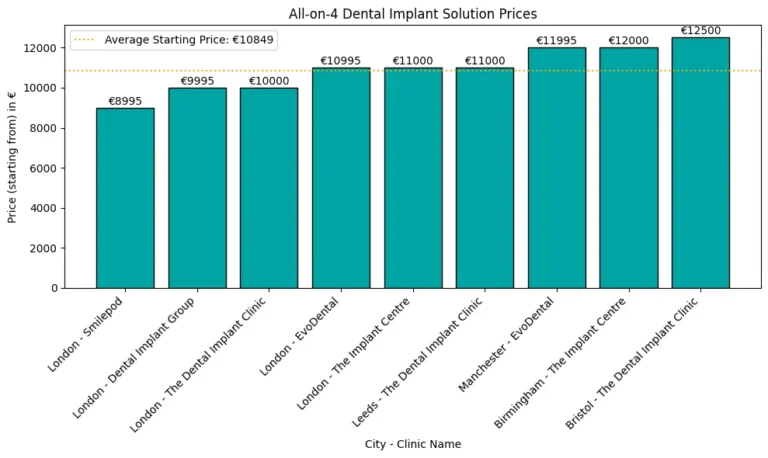
All-on-4 Dental Implants Savings Calculator | UK vs Albania
| Service | Albania 🇦🇱 | UK 🇬🇧 | Savings in € | Savings in % |
|---|---|---|---|---|
| - | €- | €- | - | - |
How much cheaper are All-on-4 in Albania vs Ireland?
All-on-4 in Albania costs 66.0% less than in Ireland, with prices ranging from €3,200-€3,400 compared to Ireland’s €9,500-€14,000.
The average cost for All-on-4 in Albania is approximately €3,300, while in Ireland patients pay around €10,000 – making Albanian All-on-4 treatments €6,300 cheaper. This substantial price difference makes Albania an attractive dental tourism destination for Irish patients seeking high-quality implant solutions at significantly more affordable rates while maintaining European standards and materials.
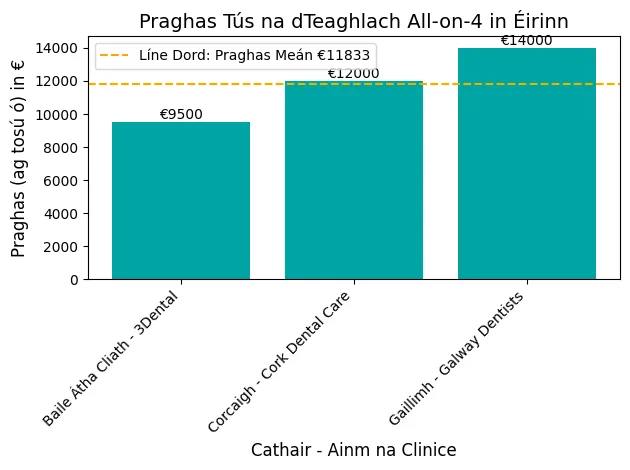
All-on-4 Dental Implants Savings Calculator | Ireland vs Albania
| Service | Albania 🇦🇱 | Ireland 🇮🇪 | Savings in € | Savings in % |
|---|---|---|---|---|
| - | €- | €- | - | - |
How much cheaper are All-on-4 in Albania vs Cyprus?
All-on-4 in Albania costs 50.8% less than in Cyprus, with prices ranging from €3,200-€3,400 compared to Cyprus’s €8,500-€11,500.
The average cost for All-on-4 in Albania is approximately €3,300, while in Cyprus patients pay around €12,000 – making Albanian All-on-4 treatments €3,300 cheaper. This substantial price difference makes Albania an attractive alternative for dental tourists seeking affordable implant solutions while maintaining quality standards.

All-on-4 Dental Implants Savings Calculator | Cyprus vs Albania
| Service | Albania 🇦🇱 | Cyprus 🇨🇾 | Savings in € | Savings in % |
|---|---|---|---|---|
| - | €- | €- | - | - |
How much cheaper are All-on-4in Albania vs America?
All-on-4 in Albania costs 73.3% less than in America, with prices ranging from €3,200-€3,400 compared to America’s €12,000-€16,000.
The average cost for All-on-4 in Albania is approximately €3,300, while in America patients pay around €14,000 – making Albanian All-on-4 treatments €8,800 cheaper. A complete full-arch restoration that would cost €14,000 in the US can be obtained for just €3,300 in Albania, allowing patients to save over €10,000 while still receiving high-quality dental care.
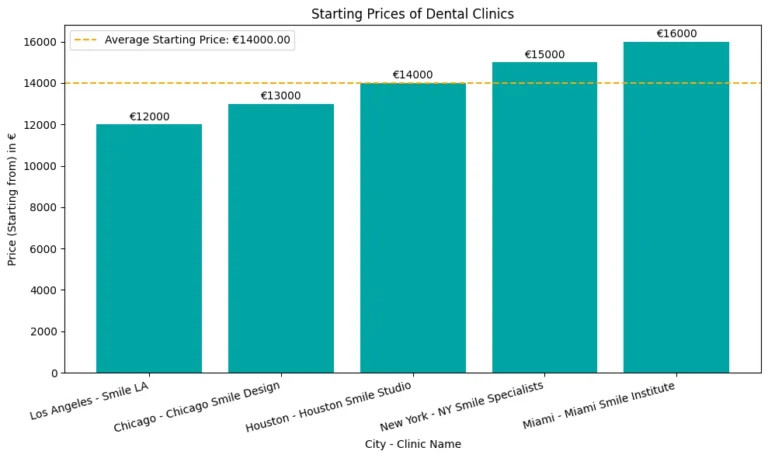
All-on-4 Dental Implants Savings Calculator | USA vs Albania
| Service | Albania 🇦🇱 | USA 🇺🇸 | Savings in € | Savings in % |
|---|---|---|---|---|
| - | €- | €- | - | - |
How much cheaper are All-on-4 in Albania vs Spain?
All-on-4 in Albania costs 50.8% less than in Spain, with prices ranging from €3,200-€3,400 compared to Spain’s €6,500-€15,600.
The average cost for All-on-4 in Albania is approximately €3,300, while in Spain patients pay around €11,050 – making Albanian All-on-4 treatments €3,300 cheaper. This substantial price difference makes Albania an attractive option for patients seeking affordable dental implant solutions without compromising on quality.
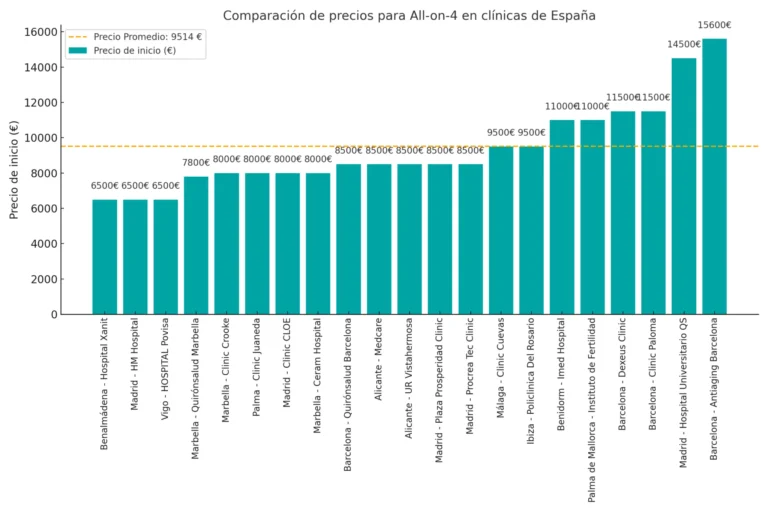
All-on-4 Dental Implants Savings Calculator | Spain vs Albania
| Service | Albania 🇦🇱 | Spain 🇪🇸 | Savings in € | Savings in % |
|---|---|---|---|---|
| - | €- | €- | - | - |
How much cheaper are All-on-4 in Albania vs Belgium?
All-on-4 in Albania costs 54.3% less than in Belgium, with prices ranging from €3,200-€3,400 compared to Belgium’s €7,000-€17,000.
The average cost for All-on-4 in Albania is approximately €3,300, while in Belgium patients pay around €12,000 – making Albanian All-on-4 treatments €3,800 cheaper. This substantial price difference makes Albania an attractive destination for Belgian patients seeking high-quality dental implant solutions at a fraction of the cost while maintaining European quality standards.
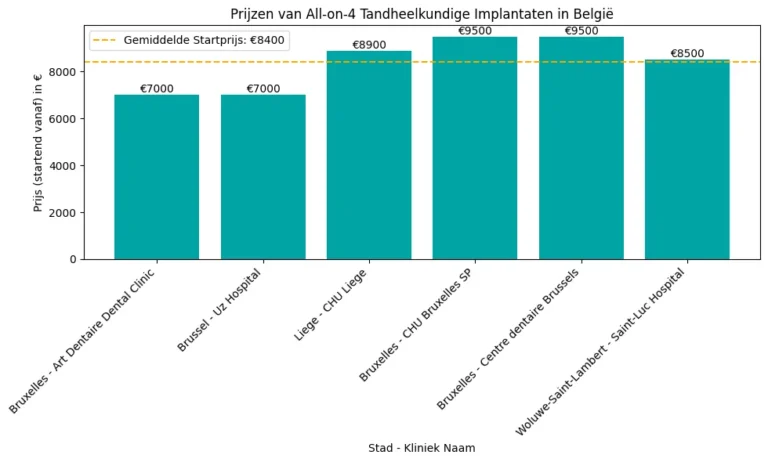
All-on-4 Dental Implants Savings Calculator | Belgium vs Albania
| Service | Albania 🇦🇱 | Belgium 🇧🇪 | Savings in € | Savings in % |
|---|---|---|---|---|
| - | €- | €- | - | - |
How much cheaper are All-on-4 in Albania vs Greece?
All-on-4 in Albania costs 62.4% less than in Greece, with prices ranging from €3,200-€3,400 compared to Greece’s €8,500-€11,500.
The average cost for All-on-4 in Albania is approximately €3,300, while in Greece patients pay around €10,000 – making Albanian All-on-4 treatments €5,300 cheaper. This substantial saving makes Albania an attractive destination for dental tourists seeking quality implant solutions at significantly more affordable prices without compromising on treatment quality.
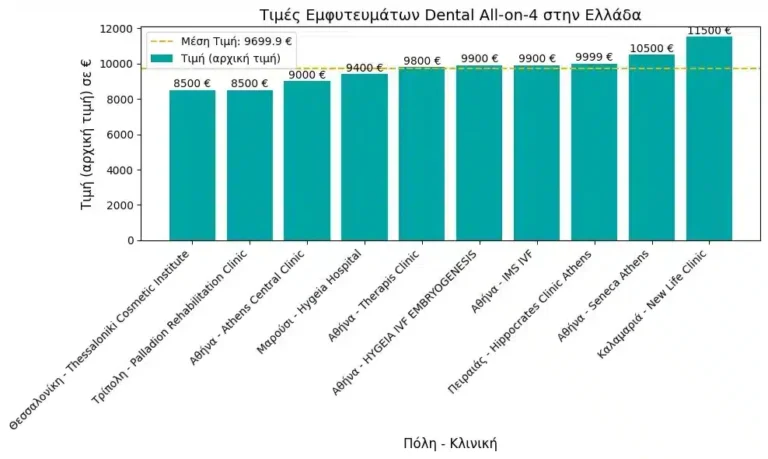
All-on-4 Dental Implants Savings Calculator | Greece vs Albania
| Service | Albania 🇦🇱 | Greece 🇬🇷 | Savings in € | Savings in % |
|---|---|---|---|---|
| - | €- | €- | - | - |
Why Albania's prices are up to 85% cheaper ?
No VAT on Medical Procedures
Albania does not charge VAT on medical procedures, including All-on-4 in Albania. This significantly reduces treatment costs without compromising service quality.
Lower Clinic Overhead Costs
All-on-4 in Albania operate at lower costs, patients enjoy significantly more affordable All-on-4 in Albania. These savings go straight to the patient, while maintaining top-notch professionalism and high-quality dental care.
Same EU-Certified Materials
Most clinics in Albania use the same EU-certified materials found in Western countries, including CE-marked All-on-4 recognized for their safety and performance. This ensures that patients choosing All-on-4 in Albania benefit from treatments meeting European standards for quality, durability, and reliability. Combined with Albania’s lower operating costs, it creates an exceptional balance between affordability and top-tier clinical outcomes
Factors affecting the cost of All-on-4:
Geographic Location
Number of All-on-4 Required
Number of All-on-4 Required: The number of All-on-4 needed will influence the overall cost. Whether you need multiple All-on-4, or a full arch replacement, your treatment plan will be tailored to your specific needs.
Materials Used
Materials Used: The type of All-on-4 and restoration materials chosen can affect the cost. High-quality materials may have a higher price tag but offer enhanced durability and aesthetic appeal.
Why choose Excelentis in Albania for All-on-4 in 2025 ?
Excelentis in Albania offers All-on-4 dental implants with a 98.9% long-term success rate, EU-certified implant surgeons, and guided surgery using 3D CBCT & CAD/CAM technology. International patients receive all-inclusive care with fixed teeth in 72 hours, premium Nobel/Straumann materials, 75% savings vs EU/US, and full dental tourism services with VIP transfers throughout 2025.
Clinical Excellence
- Excelentis achieves a 98.9% success rate for All-on-4 dental implants
- Fixed teeth in 72 hours with Nobel Biocare or Straumann implants
- Guided surgery and digital planning ensure long-term precision
EU-Certified Team
- EU-certified team of specialists with 15+ years of collective experience
- 98.9% patient satisfaction rating across independent evaluations
- Successfully completed 600+ procedures in 2024
Technology
- Guided surgery with 3D CBCT and surgical stents for millimeter-level accuracy
- CAD/CAM milling for same-day temporary prosthesis placement
- Implant planning software ensures optimal angulation and long-term success
Safety
- All-on-4 implants placed using guided surgery to minimize risk and maximize precision
- 100% sterile, EU-certified implant components with proven biocompatibility
- Post-op protocols ensure zero infection incidents and fast recovery
Strategic Location
- Central medical tourism hub with easy flight connections
- Close to top-rated accommodations
- Accessible transport for hassle-free follow-ups
All-Inclusive Dental Tourism in Albania
For treatments over €4,000:
- Free flights from Europe
- Free luxury accommodation
- Free VIP transfers airport-hotel-clinic
- Free 3D planning and consultation
Before & After: Excelentis Patient Transformations
Drag the arrows in the image to slide between before and after.
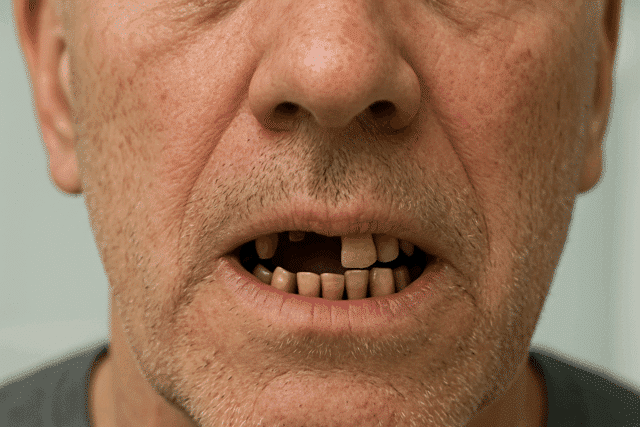
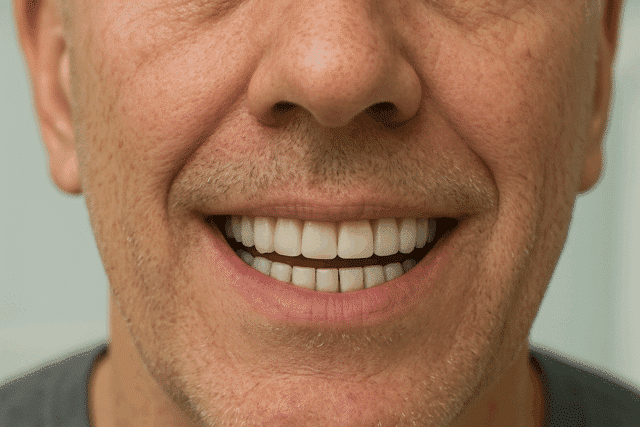
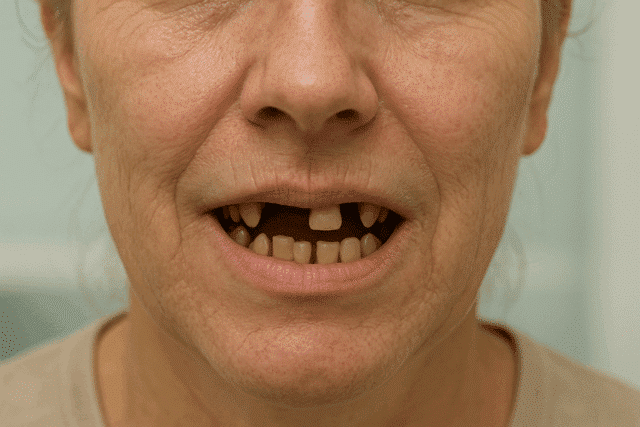
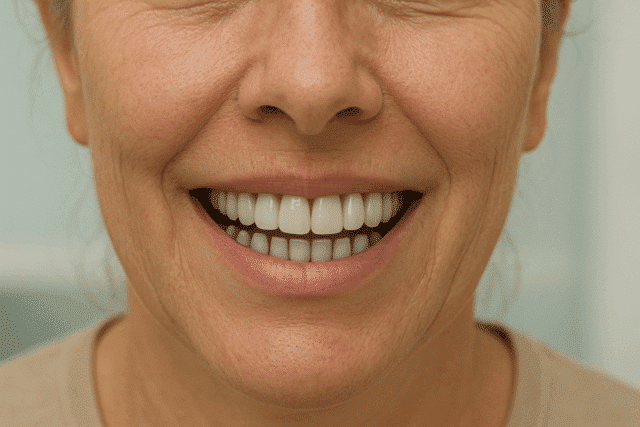
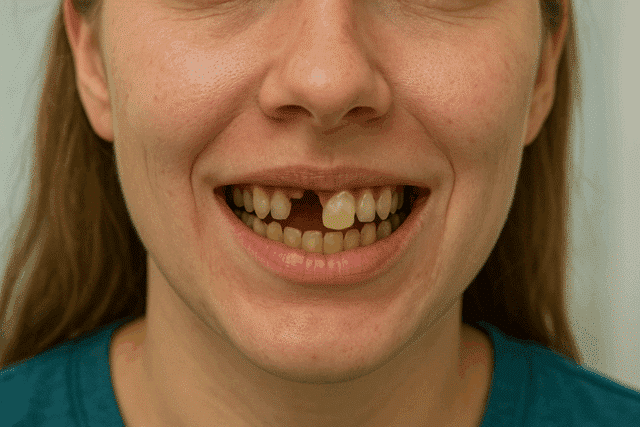
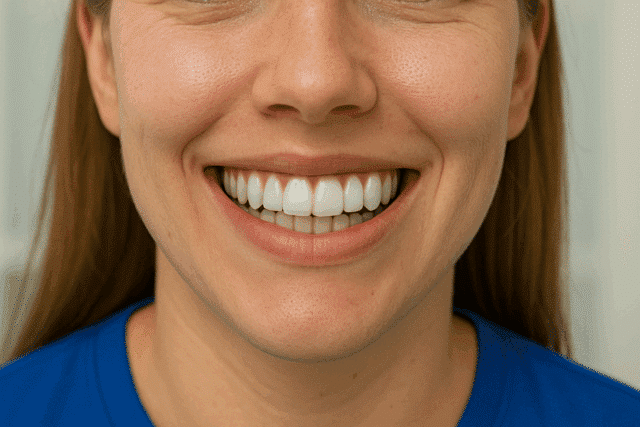
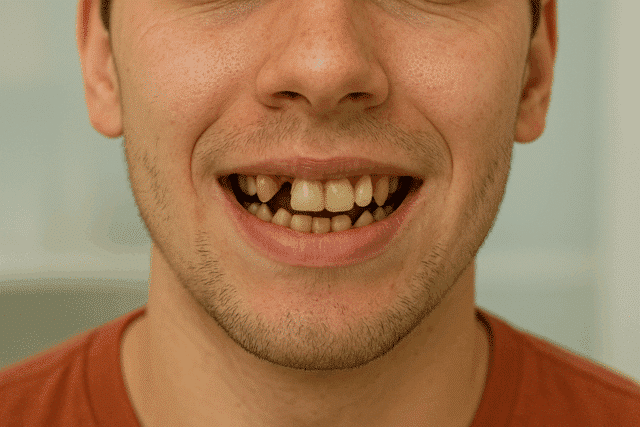
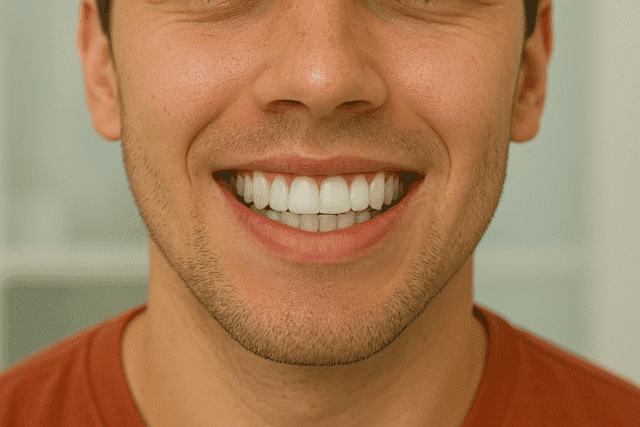
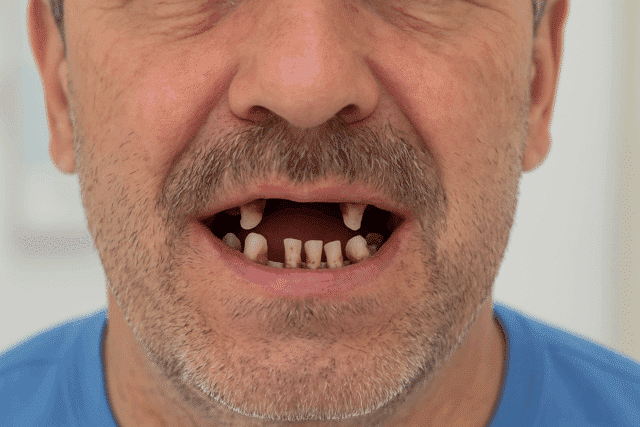
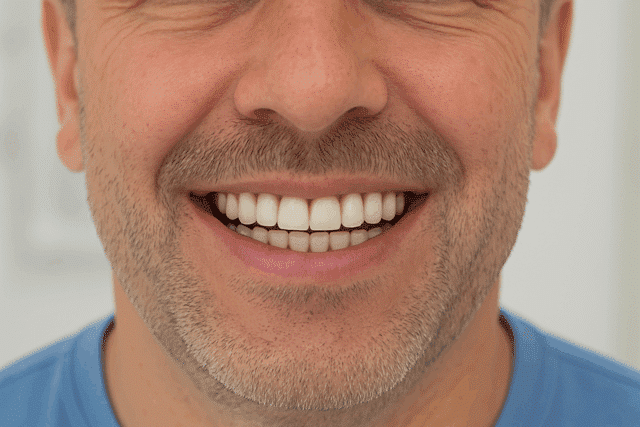
Excelentis: All-on-4 In Tirana/Albania Reviews
For years I have had problems that I could not solve in any clinic.
I chose Excelentis thanks to the very dedicated and kind staff.
Brand new and fully equipped clinic, adjacent to the accommodation, very convenient as a solution.
Thank you
A special thank you to Eros who was more than a companion, a friend
Doctors who love their work first and foremost
I am super satisfied with the work and the post-operative staff are always available if you have any questions or doubts. THANK YOU so much to all the dentists and assistants
I absolutely loved my experience there.
Very welcoming staff and amazing work done.
How long does it take to get All-on-4 in Albania?
Getting an All-on-4 treatment at Excelentis, in Albania typically takes just 3 days. The process is streamlined, efficient, and ideal for international patients. Here’s what happens each day:
Your All-on-4 Treatment Timeline in Albania
Initial Consultation
Treatment Planning
Travel Arrangements
Premium Treatment
Recovery & Tourism
Aftercare Support
Step 1 of 6 · 30–45 minutes
Complete
Free online consultation to discuss your dental needs and treatment options.
✅ What’s Included
⭐ Key Highlights
Step 2 of 6 · 1–2 hours
Complete
Detailed planning plus procedural overview for your All-on-4.
✅ What’s Included
⭐ Key Highlights
Step 3 of 6 · 2–3 days
Complete
We help you organize your trip with ease – flights, transfers & hotel.
✅ What’s Included
⭐ Key Highlights
Step 4 of 6 · 3–7 days
Complete
Advanced sinus lift & implant surgery using premium materials and technology.
✅ What’s Included
⭐ Key Highlights
Step 5 of 6 · 2–5 days
Complete
Relax, explore Albania, and recover while under clinical supervision.
✅ What’s Included
⭐ Key Highlights
Step 6 of 6 · Lifetime
Complete
Comprehensive aftercare instructions and lifetime support for your implants.
✅ What’s Included
⭐ Key Highlights
📅 Initial Consultation · 30–45 min · 17% Complete
📄 Treatment Planning · 1–2 h · 33% Complete
✈️ Travel Arrangements · 2–3 ditë · 50% Complete
💚 Premium Treatment · 3–7 ditë · 67% Complete
📸 Recovery & Tourism · 2–5 ditë · 83% Complete
🛡️ Aftercare Support · Lifetime · 100% Complete
Dental Implant- All-on-6 & All-on-8 Prices
-
Metal-Ceramic Crown
-
Titanium Abutment
-
JD® Implant
-
15+ Year Warranty
-
Implant Passport
-
Surgery Fee Included
All-on-6 (Zirconia)
-
6 Premium Zirconia Teeth (per arch)
-
Titanium Multi-Unit Abutments
-
6 JD® Implants (per arch)
-
15+ Year Warranty
-
Custom-Made Titanium Bar
-
Implant Passport
All-on-8 (Zirconia)
-
8 Premium Zirconia Teeth (per arch)
-
Titanium Multi-Unit Abutments
-
8 JD® Implants (per arch)
-
15+ Year Warranty
-
Custom-Made Titanium Bar
-
Implant Passport
A warm welcome from the Director of Excelentis

International Patient
Video Testimonials

Financing Your All-on-4 in Albania
Excelentis offers All-Inclusive packages with Flexible Payment Plans, with 0% interest over 6 months and no hidden fees.
Flexible Payment Plan
- ✅At Excelentis, we offer flexible payment plans to make your All-on-4 treatment more affordable!
- 💳 You can spread the cost into easy monthly installments, tailored to your budget.
- 📞 Contact us today to find the best financing option for you!
0% Interest Over 6 Months at Excelentis
- At Excelentis, we offer 0% interest financing so you can enjoy All-on-4 without additional costs!
- You can spread your payment into monthly installments, ensuring an affordable path to your new smile.
Transparent pricing
- ✅ At Excelentis, we provide transparent pricing so you know exactly what you’re paying for—no surprises!
- 🔎 We break down all costs upfront, ensuring clarity on every aspect of your All-on-4 journey.
No Hidden Fees Guarantee
- ✅ At Excelentis, we uphold a no hidden fees guarantee, ensuring you never face unexpected charges!
- 💬 Our transparent approach means every cost is clearly outlined, giving you total peace of mind.
Book Your Virtual Consultation with Our Lead Implantologistays Away – Get Started Today!
All-on-4 Albania FAQ
Is it safe to get All-on-4 in Albania?
Yes, it is perfectly safe to get All-on-4 dental implants in Albania, especially in Tirana. The safest option is to choose a clinic like Excelentis, which specializes in dental tourism and offers All-Inclusive packages tailored for international patients, including certified implant systems, expert oral surgeons, and full post-treatment care.
Why should I choose Excelentis over other dental clinics in Europe?
Excelentis offers the same high-quality All-on-4 dental implants as top European clinics, but at up to 70% lower cost, without compromising on safety or results. Located in Tirana, the clinic combines European-standard protocols, cutting-edge technology, and personalized care in English and Italian. What sets Excelentis apart is its focus on dental tourism, offering All-Inclusive packages with airport pickup, hotel stay, and priority scheduling — all handled by a dedicated international patient team. With hundreds of successful full-mouth restorations and glowing patient reviews, Excelentis is the smart, affordable choice for those seeking world-class results without the European price tag.
Are All-on-4 in Albania performed by qualified dentists?
Yes, All-on-4 procedures in Albania are performed by highly qualified and internationally trained dentists, many of whom have specialized in implantology in countries like Italy, Germany, or Switzerland. Reputable clinics like Excelentis employ oral surgeons and prosthodontists with years of experience in full-mouth restorations, using globally recognized implant systems such as Nobel Biocare or Straumann. These professionals follow strict European sterilization protocols and advanced 3D diagnostic methods to ensure maximum precision, safety, and long-term success for each patient.Yes, at Excelentis,All-on-4 are performed by highly qualified, European-trained specialists using advanced technology and top-quality materials. We follow strict European sterilization protocols, ensuring safe, precise, and long-lasting results comparable to top clinics in the UK, Germany, and Italy.
How long do I need to stay in Albania after the All-on-4 procedure?
You only need to stay in Albania for 3 days to complete the initial All-on-4 procedure, including diagnostics, surgery, and placement of temporary fixed teeth. After this short stay, you can return home with a full set of functional teeth. A second visit is usually scheduled 4 to 6 months later to replace the temporaries with your final zirconia or ceramic bridge — this second stay typically lasts 5 to 7 days.
Does insurance cover All-on-4 in Albania?
Dental insurance coverage for All-on-4 dental implants in Albania varies depending on your insurance provider and plan specifics. Generally, dental insurance plans focus on preventive care and may offer limited coverage for major procedures like implants. Many plans have annual maximums, often around $1,500, which may not fully cover the cost of All-on-4 implants. Additionally, some insurance policies may not cover procedures performed outside your home country.
Before proceeding, it’s advisable to consult with your insurance provider to understand your coverage details. Reputable clinics in Albania, such as Excelentis, can assist by providing detailed treatment plans and invoices, which you can submit to your insurer for potential reimbursement.

What Happens After I Submit my Request?
✅ Our team will carefully review your information.
We assess your details to better understand your dental implant needs.
- ✅ You’ll hear from us shortly.
One of our specialists will reach out to discuss the next steps. - ✅ We’ll schedule your consultation at your convenience.
We work around your availability to book a personalized appointment.





